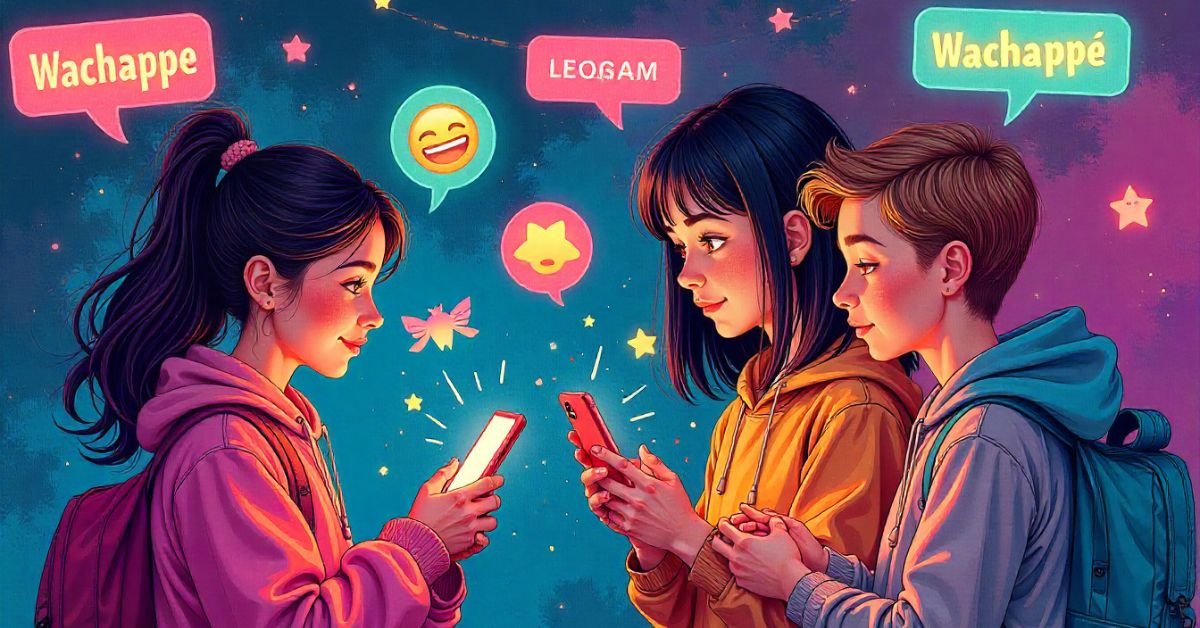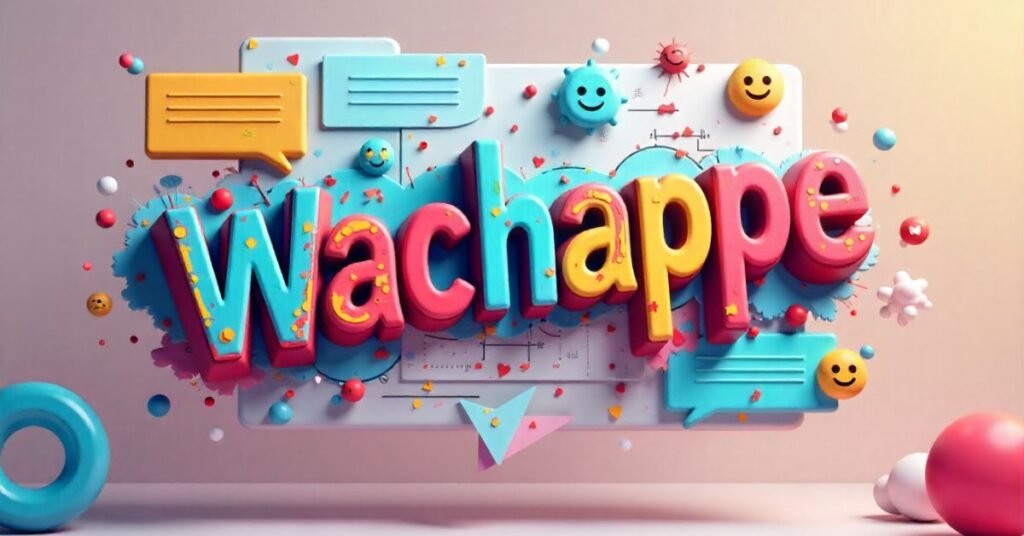Introduction
Even greetings are joining the digital revolution in a world where communication is changing more quickly than ever. Introducing Wachappe, a new-age salutation that is making an appearance in Gen Z lexicons, messaging apps, and online communities. It’s not simply a strange term; it’s quickly evolving into a cultural marker and an indication of how online language is influencing how we communicate.
From memes to messages, digital welcomes reflect not just how we speak, but how we connect. One such term is “wachappe,” which is vibrant, lighthearted, and oddly sticky. However, what is it, where did it originate, and why is it becoming popular right now?
It’s history, significance, dissemination, and wider ramifications for language in the digital age are all examined in this article. Whether you’re a linguist, developer, digital native, or an inquisitive spectator, this article will teach you how a single word is garnering attention and transforming online expression in 2025.
What Exactly Is Wachappe?
At its most basic, “wachappe” works as a casual greeting comparable to “what’s up?” or “yo.” However, it is not limited by definitions; it exists on several internet platforms in the form of tone, emoji, memes, and GIFs.
In contrast to conventional greetings, which preserve order, Wachappe feels impromptu and adaptable. Its versatility gives it digital life and enables it to manifest in several ways:
- As an independent DM
- incorporated into TikTok skits and memes
- Changing chatbots’ default greetings
It has just enough “weird but cool” energy to succeed in the digital arena, which values originality and emotional tone.
The Origins and Digital Roots of Wachappe
No one knows exactly where it began, which contributes to its magic. According to others, it evolved from “wassup” or “what happened,” which may have been taken from regional slang or Caribbean dialects. According to some, it began as a misspelling that became popular on X (previously Twitter).
This form of linguistic warping is prevalent in the internet language:
- Misspellings, such as “teh” for “the,” become inside jokes.
- Variations that have a catchy sound appeal to meme culture.
- Adoption by the community strengthens its application.
Young people created these trends, adopted Wachappe, and strengthened it through digital repetition.
How Wachappe Is Used in Online Conversations
It can be found in a variety of social settings. It’s more than simply a greeting on sites like TikTok, Reddit, and Discord; it’s a mood-driven signal. This is how it’s typically used:
- In a lighthearted manner: Unexpected statement chain opener or icebreaker
- Irony: Inappropriately used on purpose to create a humorous impact
- Using memes to caption responses or surprising material
- In audio: used in trending tracks and short-form audio loops on TikTok and Reels
It reflects the evolution of other digital expressions, such as “bruh” or “yeet,” from words to cultural shorthand.
Cultural Impact
Since language is identity, we are constantly looking for cues that tell us, “I belong,” when we are online. it does that for a certain group of people. This is why it’s appealing
- Community: Digital identity is expressed through specialized language.
- Humor: The ridiculousness makes for quick jokes.
- Brevity: Perfect for quick conversations, shorter than “what’s up” or “howdy.”
- Mimicry: To increase the reach of “wachappe,” tools such as voice filters and AI generators play it back in humorous tones.
Wachappe vs. Traditional Greetings
| Feature | Wachappe | Traditional Greetings |
| Formality | Informal & playful | Usually formal or neutral |
| Origin | Internet slang | Cultural/traditional |
| Usage Platforms | Social media/chat | Email, face-to-face |
| Brevity | Very short (1 word) | Varies (e.g., “Good morning”) |
| Creativity Potential | High (memes, audio) | Low |
| Cultural Signal | Digital native/slang | Regional/age-specific |
This comparison demonstrates why Wachappe and other expressive welcomes are becoming more popular among digital native users.
How Memes and Pop Culture Amplify Wachappe

If there is one thing TikTok has taught us, it is that audio memes spread more quickly than text. It has joined this movement and is frequently seen in
- Videos of lip-syncing
- Remixes of sounds
- Threads of reactions
- Parody skits
Influencers and micro-content producers have used the phrase to label merchandise, establish trends, and strengthen communities. Thanks to its widespread use, It has evolved into a social asset.
Psychological and Social Factors Behind Trendy Terms
The unexpected surge in words like “wachappe” has scientific roots. According to a 2025 study by the Linguistic Innovation Collective, viral words often share the following characteristics
- Playfulness with phonetics (they sound entertaining)
- Social mimicry (adoption is reinforced by peer behavior)
- emotional bond (rebellion or humor)
It succeeds in all three, setting it up for quick popularity among younger viewers.
Wachappe’s Role in the Evolution of Digital Slang
The lifeblood of casual language is slang. Its lifetime functions similarly to software in the digital age
- Version 1.0: Misspelled or coined
- Version 2.0: Disseminated and condensed
- Version 3.0: Is it mainstreamed, or has it killed memes?
It is now in the Version 2.5 stage, where he is well-known yet still feels like an insider. Users feel most cool when they use it at this specific window.
Furthermore, it reflects a broader trend: the use of language that seems impromptu but is strategically employed to convey a sense of group belonging.
Will Wachappe Last, or Is It Just a Passing Fad?
Depending on how it develops, yes. Few digital slang phrases have lasted throughout time, according to history (do you recall “YOLO”?). Nonetheless, it’s current success can be attributed to its effective use of text, music, and memes.
- Text, music, and memes are examples of multimodal use.
- Tonality: May be humorous, strange, or upbeat.
- No set definition: Allows for creativity
It may outlive its meme origins if platforms (such as emoji keyboards and Snap filters) adopt it.
Should Brands Care About Language Trends Like Wachappe?
Of course, but with caution. Although using lingo like “wachappe” in marketing or UX (user experience) demonstrates your familiarity with online culture, doing so incorrectly can turn off audiences.
Potential uses for brands
- Add it to Easter eggs, Gen Z product sites, or bot greetings.
- Use in a lighthearted campaign to raise brand awareness
- Don’t lead; listen. Allow youngsters to set the tone and, when appropriate, reflect it.
Understanding what the term says about the humor and identification badges of your target group is more important for success than simply replicating it.
Visual
| Stage | Description | Example Term |
| Introduction | Used by few, still confusing | ZARP |
| Adoption | Known in niche circles | Wachappe |
| Peak Popularity | Viral, used in memes/apps | YEET |
| Stabilization | Known, but no longer cool | YOLO |
| Decline | Overused or co-opted | Swag |
FAQ
What is meant by “Wachappe”?
It’s an informal greeting that developed online and is frequently used like “what’s up.”
What is the pronunciation of Wachappe?
The standard pronunciation is “wah-chap-eh”; however, there is no set way to say it.
The Wachappe trend: who initiated it?
Although its exact origin is unknown, it most likely developed from typo culture or internet slang.
Where is the popularity of Wachappe?
Reddit, TikTok, Discord, and Gen Z Twitter circles are where it is most prevalent.
Does any formal language have a word for Wachappe?
No, as of 2025, it is an unofficial slang phrase that is not recognized by any authoritative dictionary.
Conclusion
Wachappe is more than just a virtual greeting; it’s a reflection of the lighthearted, lively, and humorous ways people converse these days. It combines spontaneity, identity, humor, and revolt, and it’s evidence that, when used appropriately, a made-up phrase can upend internet society.
More random, memeable, and context-changing “Wachappes” should appear as memes and voices gain popularity. Monitoring language patterns provides valuable insights into the personalities, joy expressions, and triggers of your users.
Wachappe is a real-life illustration of how language and technology work together to influence our perceptions of culture and connection, which is relevant for companies, linguists, content producers, and any other inquisitive digital soul.

